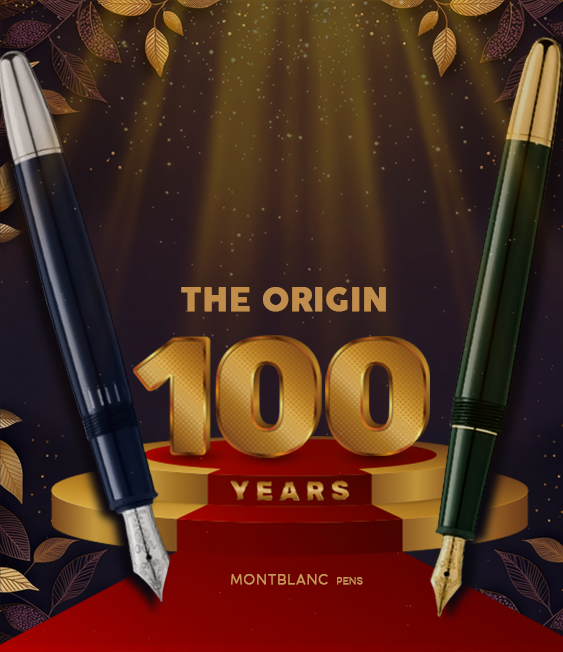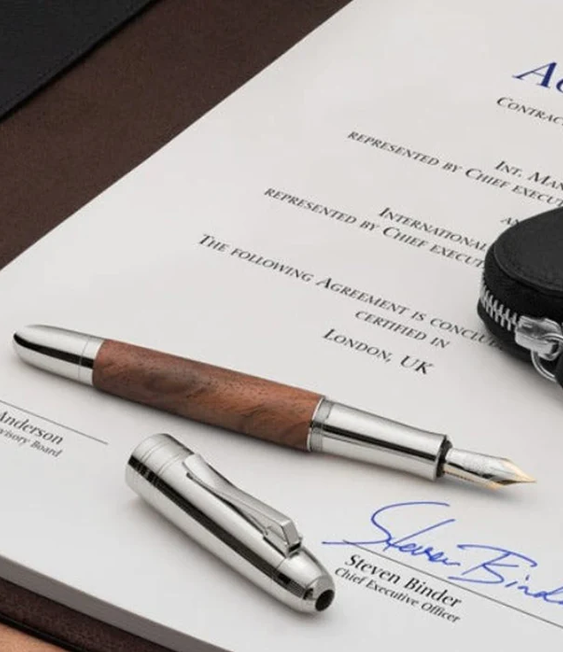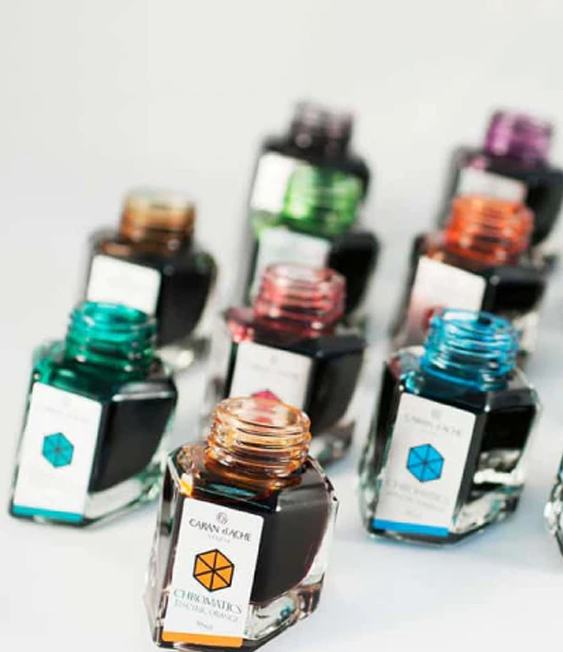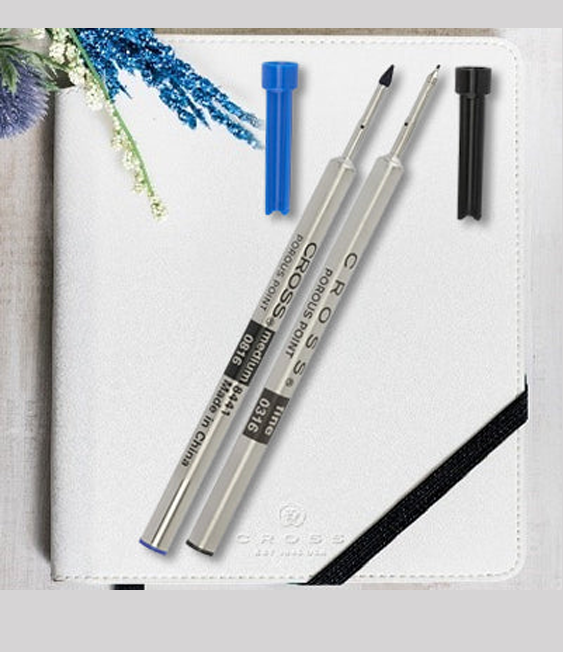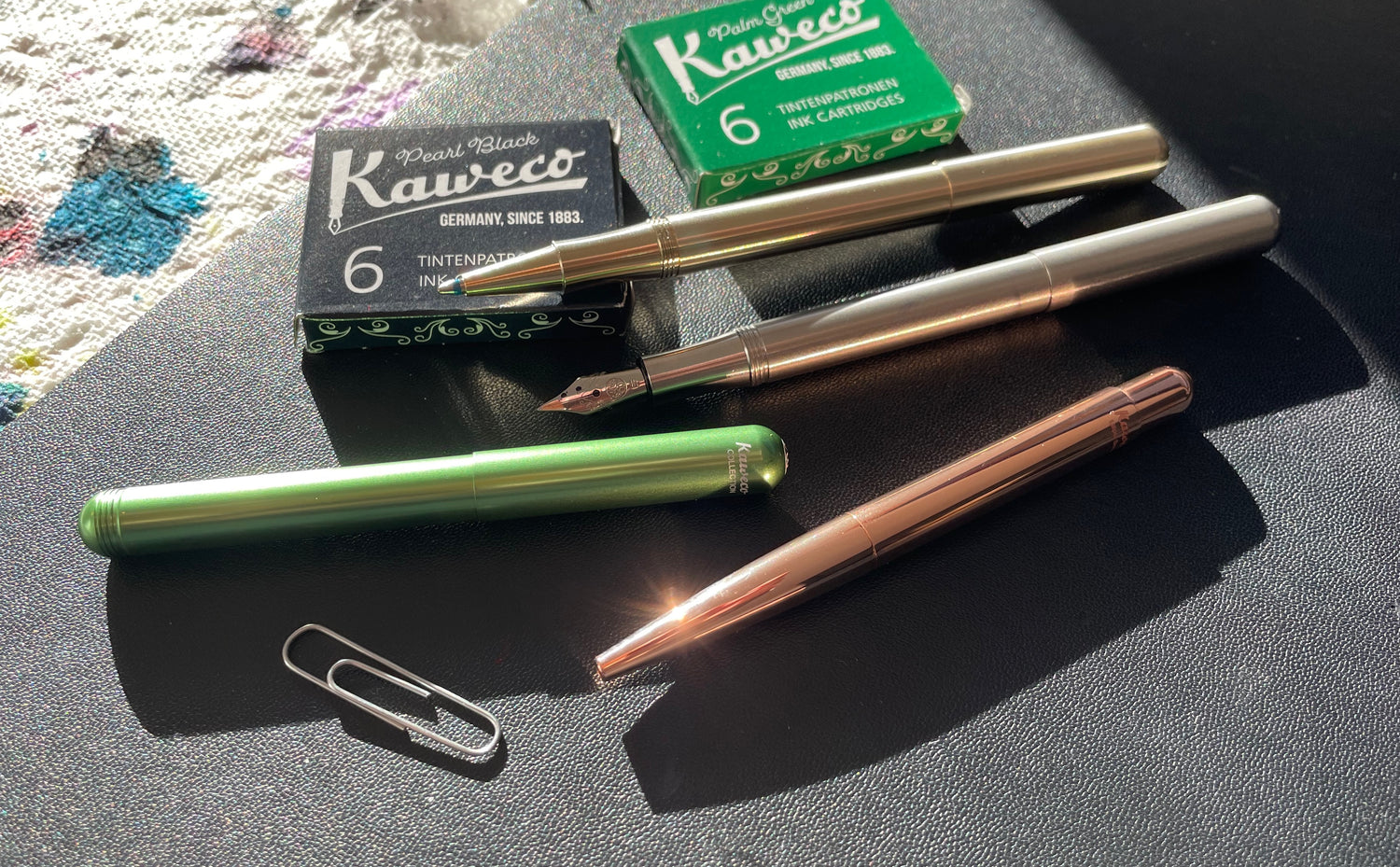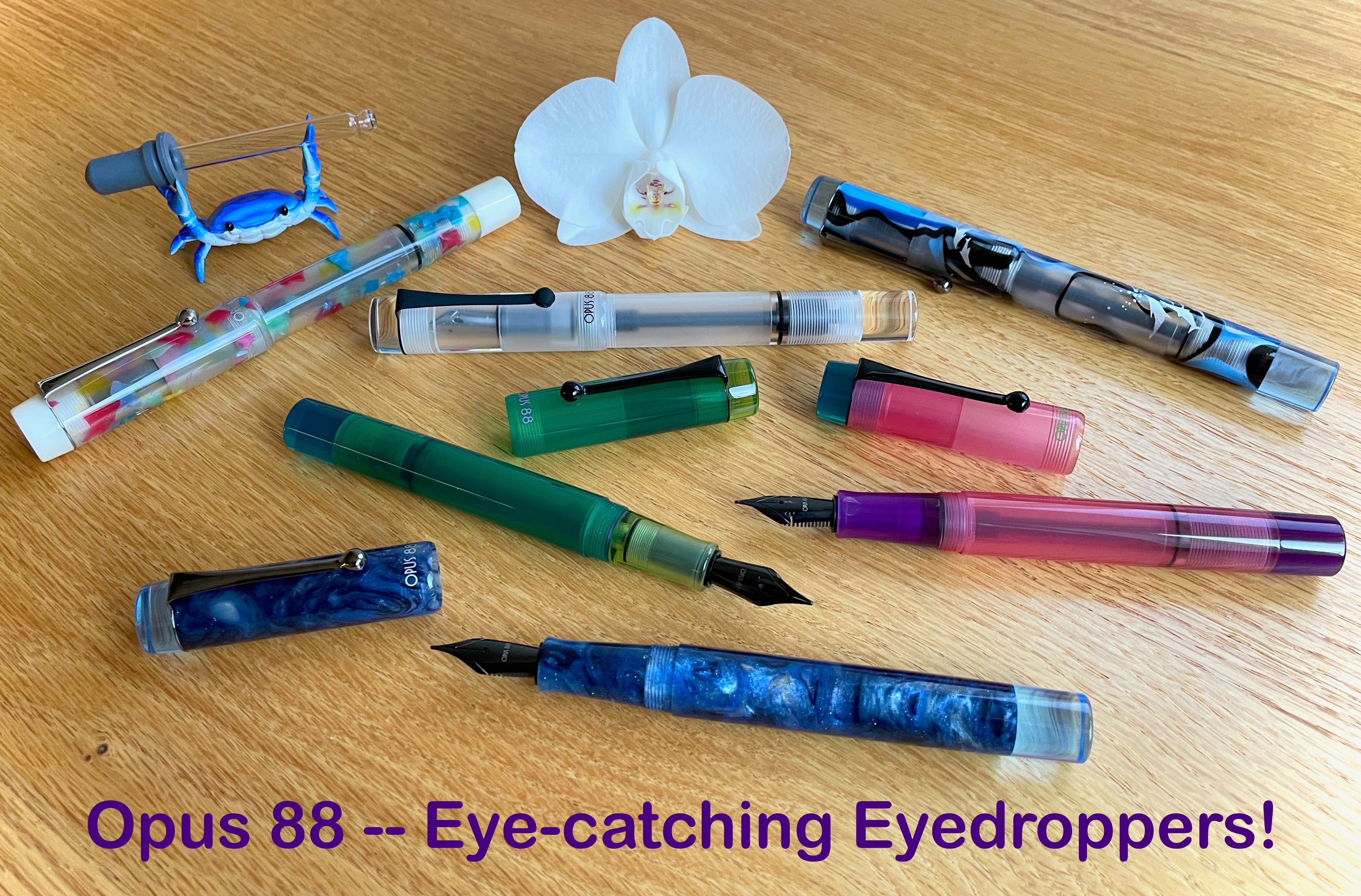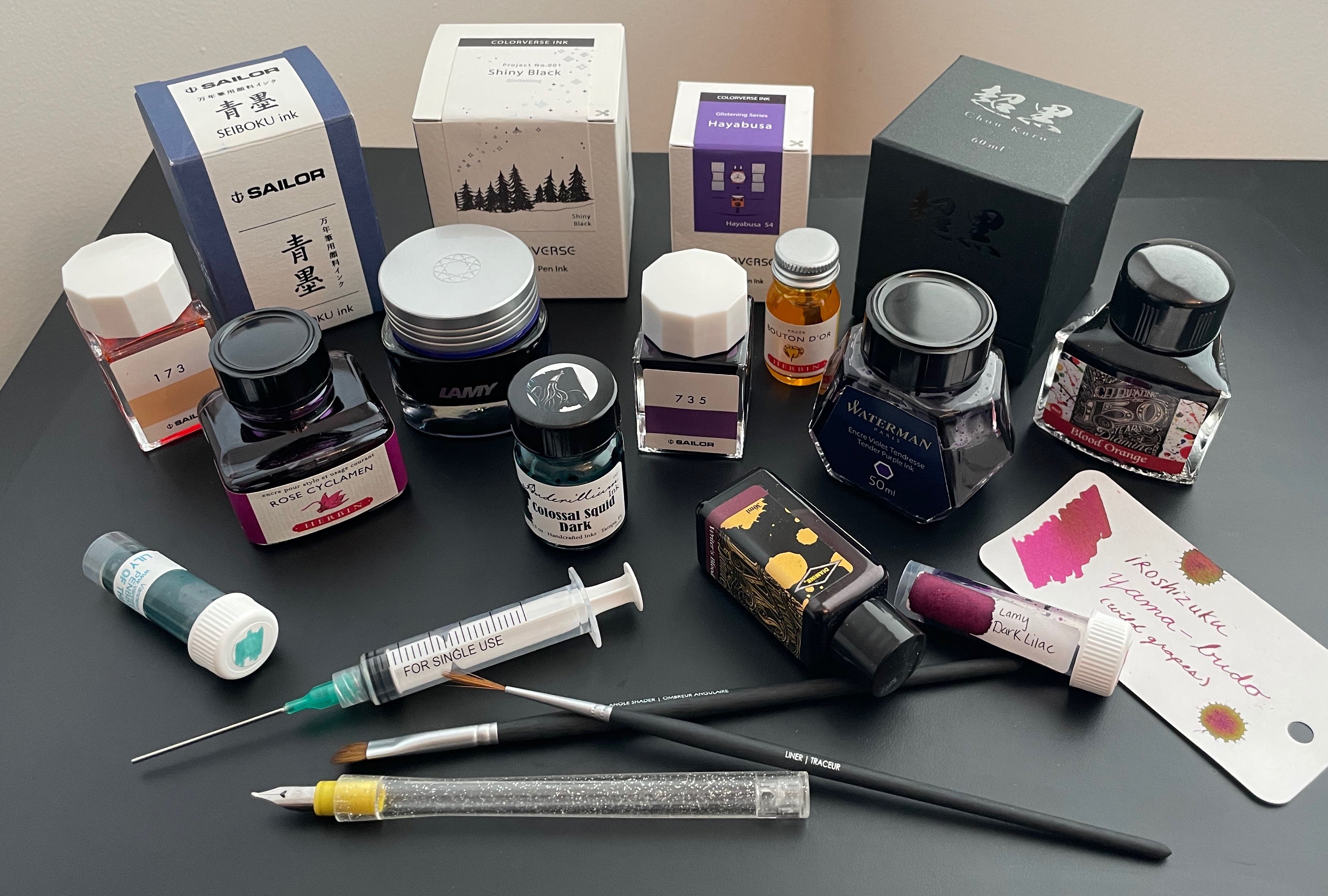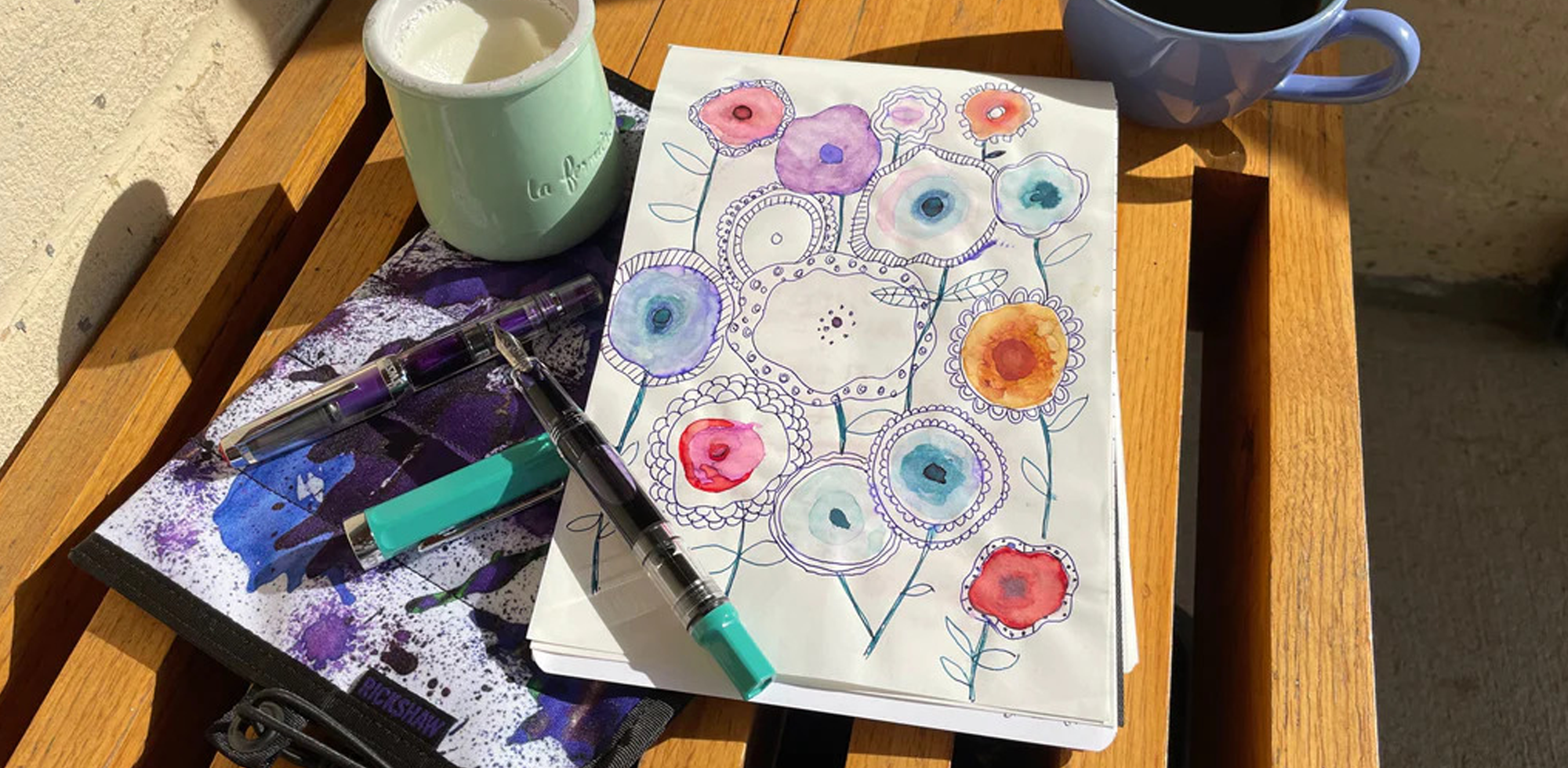I admit, the Kaweco Liliput is not for everyone. And, it wasn't a pen that I paid a lot of attention to until I started using my new TRAVELER'S notebook this week. I love my notebook and want to take it everywhere, so I started thinking about pocket pens that would be easy to carry with my notebook when I didn't want to bring a separate pen case. The more I looked at the Liliput, the more I liked it, and, pretty soon, I was 100% sure I needed to investigate the Liliput as my next blog topic.
Portable Pocket Pens
It's easy to overlook the Liliput because it's so tiny! At only 9.7 cm / 3.8" long with its cap on, it's overshadowed by the comparatively large Kaweco Sports and Supras in our display case. With the cap securely posted at the back of the pen (thanks to a threaded barrel), the little Liliput grows to 12.6 cm or 5.0", which is about the same length as many full-sized pens unposted, but still shorter than the 6" tall Lilliputians, the tiny people from Jonathan Swift's Gulliver's Travels, for which they are named. (Note that Kaweco's Liliput has one "l" and Swift's imaginary country has two, so it's easy to distinguish them!) The Liliput's maximum diameter is 9.3 mm, which is about the same size as the thickest part of a Parker Jotter ballpoint, so, not only is it short when closed, it's also very slim and easy to stash almost anywhere without adding bulk. That makes the Liliput a perfect pocket pen.
A "pocket pen" is a pen that is designed to be very compact and portable, and many of them have proportionally long caps that are designed to be posted on the back of the pen to extend the pen's size so that it's more comfortable in your hand. You don't necessarily have to literally carry it in your pocket, but the idea is that it can be an everyday carry pen, easy to take with you everywhere. There are many ways to carry a pocket pen, including clipped to your shirt or jacket pocket, loose in any other sort of pocket, in a wallet, in a pen case, in a glasses case, in a purse, or clipped to a notebook. Pocket fountain pens were quite popular during the vintage pen era, and you'll find some very cool petite pens that were made during the early-mid 20th century, including some with a ring attached to the cap so that they could be worn on a watch chain or hanging around your neck. (We have a modern pen like that now--the Monteverde Ritma Gala!)
We stock a decent number of different pocket writers (fountain pens and more), including the Pilot E95s, Sailor Professional Gear Slim Mini, TWSBI Vac Mini and Diamond Mini, Monteverde MVP, the Kaweco Sport (in all different materials and styles), the Kaweco Mini Special AL ballpoint and pencil, Traveler's brass pens and pencil, Fisher Space Pen ballpoints, the Montblanc Baby pens, and the Lamy Pico ballpoint. That's a lot of great options, but, when it comes to smallness, slimness, great looks, and durability, the Liliput stood out to me.
 (From left to right: Pilot E95s, TWSBI Diamond Mini, Sailor Professional Gear Slim Mini, Kaweco Sport, Monteverde MVP, Traveler's brass pen, Montblanc Baby ballpoint, Lamy Pico, Fisher Space Pen, and Kaweco Liliput fountain pen in Fireblue. Below is how they compare when in writing mode.)
(From left to right: Pilot E95s, TWSBI Diamond Mini, Sailor Professional Gear Slim Mini, Kaweco Sport, Monteverde MVP, Traveler's brass pen, Montblanc Baby ballpoint, Lamy Pico, Fisher Space Pen, and Kaweco Liliput fountain pen in Fireblue. Below is how they compare when in writing mode.)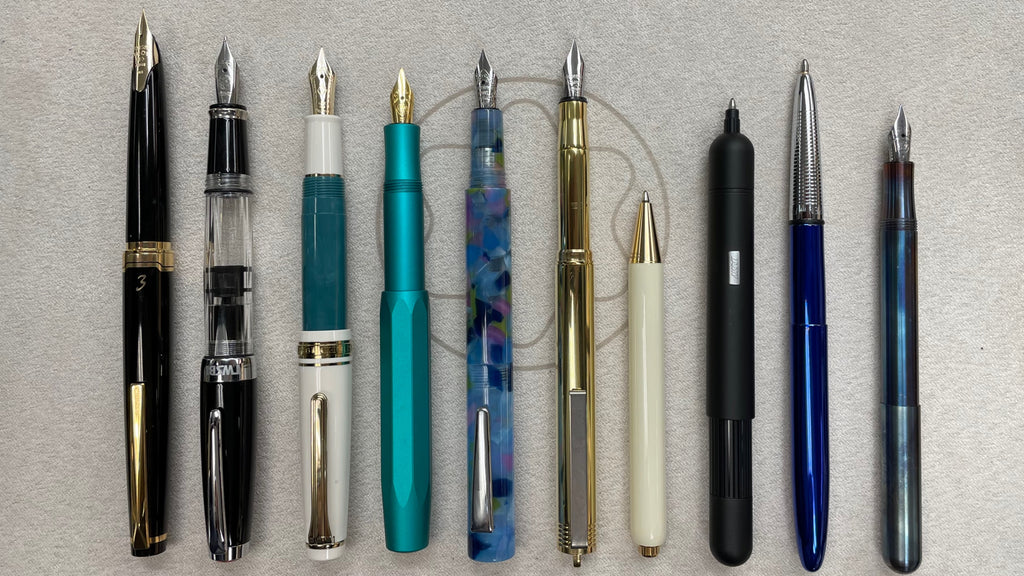
I love the Liliput's sleek minimalist shape, and the fact that you can choose between a super tiny click-style ballpoint, a capped ballpoint, or a fountain pen. The capped ballpoint and fountain pen both feature screw threads at the back so that you can securely post the cap and dramatically extend the length of the pen for longer writing, and all the versions of the Liliput are made from strong metal that's very difficult to damage beyond surface aging, so it's safe to chuck one in your pocket along with your keys, if you want to. Yes, the Liliput is cute, but it's also convenient and tough, and not necessarily lightweight, either. The Liliput comes in aluminum (8 grams), brass (21 grams), steel (22 grams), and copper (24 grams), so your choice of the pen's material dramatically affects the feel in your hand. With the heavier metals, the weight and balance compensate for the small size and make it surprisingly comfortable for those who are nervous about small pens. (My numbers here compare the fountain pens, but the principle applies for the ballpoints as well, of course.)

I was excited to discover that the Liliput is one of Kaweco's oldest models. It was created in 1908, and was originally made from ebonite. The materials have changed, but the body of the Liliput fountain pen still consists of only three parts: the cap, barrel, and front section. The vulnerable parts of the pen like the nib, feed, and ink are very well protected, and the outside of the pen doesn't have anything that can be cracked or catch onto other objects. The body of the pen is completely smooth and streamlined except for the lightly recessed threads at the end of the barrel on the two capped versions.
This design is perfect for carrying the pen in places that other fountain pens are far too bulky to fit, including the spot I envisioned carrying one: in the zipper pocket of my TRAVELER'S notebook. It also fits perfectly in the slim pen holder loop designed for the TRAVELER'S notebook (which can also clip onto other notebooks if you have a non-TN favorite).


Fountain, Ballpoint, and Capped Ballpoint
I wanted to try all three shape options (fountain pen, capped ballpoint, and regular click ballpoint) and compare all the different materials and colors (I'll get into those later!), so I asked my colleague Joy to help me grab one of each kind of Liliput from the warehouse to make sure I got them all. Finding Kawecos, with their extremely long SKU numbers (for example, K_11000100, for the green fountain pen!) written in teeny-tiny print on the side of the little tins' cardboard sleeves, is always a huge challenge for me, and I really appreciated Joy's swiftness and confidence as she pulled one of each pen from the warehouse shelf. It was sixteen pens, but they easily fit into a small bag, because the Kaweco packaging is nice and compact.

At home the next day, I examined each version closely and tried them all, beginning (of course!) with a fountain pen. I immediately liked the feel of the pen, which, for me, is a comfortable size to write with and feels very balanced in my hand. I decided to take all my notes for this blog article using the Liliput, and ended up with seven full pages in my Mnemosyne notebook (some with very small, dense writing!). I never found the pens uncomfortable or awkward to use, and in fact quite enjoyed them. The more I wrote with the fountain pen, the more I wanted one!
The Liliput fountain pen uses the same nib as the Kaweco Sport and several other models, and I loved trying extra fine and fine nibs. I own a double broad Kaweco Sport, so these nibs are on the complete opposite end of the spectrum from what I'd previously experienced, but seem appropriate for a tiny pen that I'd want to use to write small notes in small spaces. They are both extremely smooth, and I particularly like the extra fine nib because it is almost as smooth as the fine nib, but gives me more feedback and is very precise. To my great surprise, the line is just as fine as the one produced by my extra fine Sailor 1911L!
The nib and feed can be easily unscrewed and swapped out if you wish to switch to a different nib, and there are even a number of vintage nibs that will fit in the Liliput, if you are into modifying your pens that way. (I'm not an expert on this, so do your own research if you want to try!) Spare nib units are also available from Kaweco in a variety of colors, styles, and materials, ranging in price from $15 for the simple steel nibs, all the way up to $210 for Bi-Color 14k gold. Calligraphy nibs are $15 for 1.1 mm, 1,5 mm, 1.9 mm, or 2,3 mm stub, and $34 for a twin nib. (The twin nib features three tines with a slight recess in the central tine. This produces wide and narrow parallel lines with each stroke, to create lovely scrollwork or shadow writing!)

The fountain pen is too small to fit a converter, so you need to use standard international short cartridges, the easiest to find size. They're available from many different brands, including Kaweco's own cartridges, Diamine, Graf von Faber-Castell, Monteverde, Pelikan, Montblanc, and more. You can also use a blunt syringe to refill your cartridges with bottled ink like I do, if you want more variety! I tried the blue Kaweco cartridge that had come with my Sport, and found it very satisfying, although the color is almost identical to the color of the ink in the ballpoint, which was a little weird for me because it was hard to tell the two apart when I looked back at my notes! The fine nib fountain pen and the ballpoints have almost the exact same line width, but the fountain pen shows more shading and character, and feels very different from writing with a ballpoint, of course.
The pen's narrow grip can be unpleasant for some people, but I liked it, and I watched several videos on YouTube in which artists discussed how much they appreciate the Liliput because the grip allows you a great deal of control, sort of like a paintbrush. It's not just artists who like the shape of this pen, though. A lot of the videos I watched were from male Liliput fans who love the pen as an every day carry pen and said they have big hands, so apparently hand size isn't prohibitive when it comes to appreciating the Liliput. One man pointed out that it's no narrower than the Bic ballpoints most people grow up using. True!
Along with the precision I felt when holding the Liliput in the conventional way, the thin barrel allows you to hold it farther back if you wish, which is perfect for artists who want to create relaxed strokes. I also feel like the Liliput's grip and body are much less slippery than other metal pens I've used, and I found the pen considerably more comfortable for me than the metal Kaweco Sports, although I'm not sure why.
I knew pretty quickly that I like the Liliput fountain pen, but what about the ballpoints? As soon as I played with the two different ballpoints, I understood why Kaweco had decided to make both. The retractable click-style ballpoint is extremely small (only 9.8 cm or 3.9 inches long, with a maximum diameter of 9.9 mm), so it can fit places almost no other pen can go, and you also don't have to be concerned about potentially losing a cap. Yes, it's not as comfortable to use, but this is a pen you'd use to take quick notes, not write with extensively.

The capped ballpoint, on the other hand, has the exact same hand feel as the fountain pen, but, it has the convenience of a ballpoint refill, so you can write on more surfaces and don't need to worry about your ink cartridge running dry. I prefer writing with a fountain pen, but for a pen you might stash somewhere to carry with you always, a ballpoint certainly makes sense, and the capped version is comfortable to use for much longer writing sessions or for sketching on the go, just like the fountain pen with its threaded end for posting the cap.

Both ballpoints can be refilled with D1 mini ballpoint refills, which are easy to find and come in several different colors and line widths.

All three versions of the pens can be accessorized with optional slip-on clips (sold separately). They are similar to the vintage 1930-style clips you can get for the Kaweco Sport, but in a size made just for the Liliput. If you order a clip, make sure to get the "Kaweco Liliput Fountain Pen Clip" (raw bronze, chrome, or black) for the fountain pen or capped ballpoint, and the "Kaweco Liliput Ballpoint Clip" (raw bronze, chrome, or black) for the retractable ballpoint. The retractable ballpoint clips are narrower, so they aren't interchangeable.
 The clips are very strong and fit tightly to the pens, so they aren't going to slip off, but they can be removed, with effort. They are great for clipping your pen securely to a notebook, pocket, or pen loop, and also for keeping your Liliput from rolling away when you place it down on a desk. With a clip installed on the pen, I found that I could even store it inside the spiral of my Mnemosyne notebooks, even the small A6 size one I bring in my bag to pen shows! All three versions of the pen fit. (I added washi tape to my notebook, and I think it matches the brass clip quite nicely!)
The clips are very strong and fit tightly to the pens, so they aren't going to slip off, but they can be removed, with effort. They are great for clipping your pen securely to a notebook, pocket, or pen loop, and also for keeping your Liliput from rolling away when you place it down on a desk. With a clip installed on the pen, I found that I could even store it inside the spiral of my Mnemosyne notebooks, even the small A6 size one I bring in my bag to pen shows! All three versions of the pen fit. (I added washi tape to my notebook, and I think it matches the brass clip quite nicely!)

Aluminum, Brass, Steel, and Copper
So, let's say you want to get a Lilliput, and you've decided between fountain pen, capped ballpoint, and retractable ballpoint. How do you choose which material to select? As I mentioned earlier, the Lilliput pens come in aluminum, brass, steel, and copper. The aluminum pens are available with black, silver, and green color options, and the steel comes in either stainless steel or Fireblue. The pens' prices vary depending on the cost of the materials, with aluminum pens being the least expensive, followed by brass, stainless steel, copper, and, finally, Fireblue.
 (From left to right: Black, Silver, Fireblue, Stainless Steel, Green, Brass, and Copper fountain pens.)
(From left to right: Black, Silver, Fireblue, Stainless Steel, Green, Brass, and Copper fountain pens.)
The metals' weights make a huge difference in the feel of the pens, so if you want a very lightweight pen that will barely weigh you down at all, go for aluminum. The aluminum fountain pens are only 8 grams. I usually love lightweight pens, but I actually found the heavier Lilliputs most comfortable, although the colors and prices of the aluminum pens make them very appealing! The black pens are very sharp, the silver has a great futuristic look, and green is by far the most fun. Currently, the capped ballpoint versions of the Lillput aren't available in black or silver, but they are adding those colors this spring! The limited production green color is only available in fountain.
The brass pens are the next heaviest, then the steel, and finally the copper. The brass fountain pen weighs 21 grams, steel is 22 grams, and copper 24 grams. Both the brass (a mix of copper and zinc) and copper pens will patina as you use them, gaining a look that's unique to you as the metal responds to your touches. This will start to happen right away, and develop more and more over time. (Kind of like the aging of a TRAVELER'S notebook!) I had to handle the brass and copper pens in the photo above with gloves so they wouldn't start changing color! The copper pen is especially beautiful as it patinas, and it may even develop verdigris (the green color like you see on the Statue of Liberty) over time. If you don't like the way your pen looks with its natural patina, you can polish it back to shiny.
The chemical reaction that's produced when new compounds are formed as the metal reacts to the oils in your skin is also what gives brass and copper their distinctive smell. (The metal itself doesn't smell.) This scent bothers some people, so, if you can't stand the smell of pennies, the brass and copper pens might not be a good choice for you. The smell will become less noticeable as the pen patinas, and it comes off when you wash your hands. Speaking of hand washing, both brass and copper are antimicrobial (copper even more so than brass), so they will keep bacteria from multiplying--a nice feature in an object you touch all the time!
Unlike copper and brass, stainless steel doesn't change much over time. A steel Lilliput won't develop patina, and it also doesn't have any noticeable smell. I was afraid to touch the copper and brass pens very much because I didn't want to mess them up, but I loved the density and balance of the steel pens. They also have a nice warmth as the pen responds to the temperature of your hand.

The stainless steel pen is also a warmer-toned silver color than the silver aluminum, while the Fireblue pen is a mixture of dark grey, azure blue, purple, coppery orange, and fuchsia. Fireblue is very cool looking, although the effects are more subdued than they appear in some of the advertising photos you'll see of this pen. The Fireblue coloration is produced by using a torch to hand temper a plain stainless steel pen. Each one is unique! It's a great look, and definitely the most distinctive version of the Liliput. I used the Fireblue pens for my disassembled Lilliput photos above.
After trying the Liliput pens for the past several days, I am very impressed and I am considering getting one to carry with my TRAVELER'S notebook. It's not the most exciting pen in the world, but I really like it! The pen just has such a satisfying feel in my hand, and there's something about the smooth (but not slippery!) metal that I love to touch. I especially love the stainless steel pens, which have almost imperceptible horizontal traction ridges that you can feel if you run your fingernails over them. I think the capsule shape is very cool and futuristic looking, and I also love the way the pen's shape and the precision of the nib work together to produce a nice tool for sketching or note taking in small spaces. This is a pen with a great personality that can go anywhere with you. It's been around for over a hundred years, and I think it's got staying power for quite a few more!
-Laura P.
I love comments on my blog! Please leave comments if you like the articles, and, if you have any questions about this article, or any of the other blog articles, you can e-mail support@penboutique.com. Thank you!


